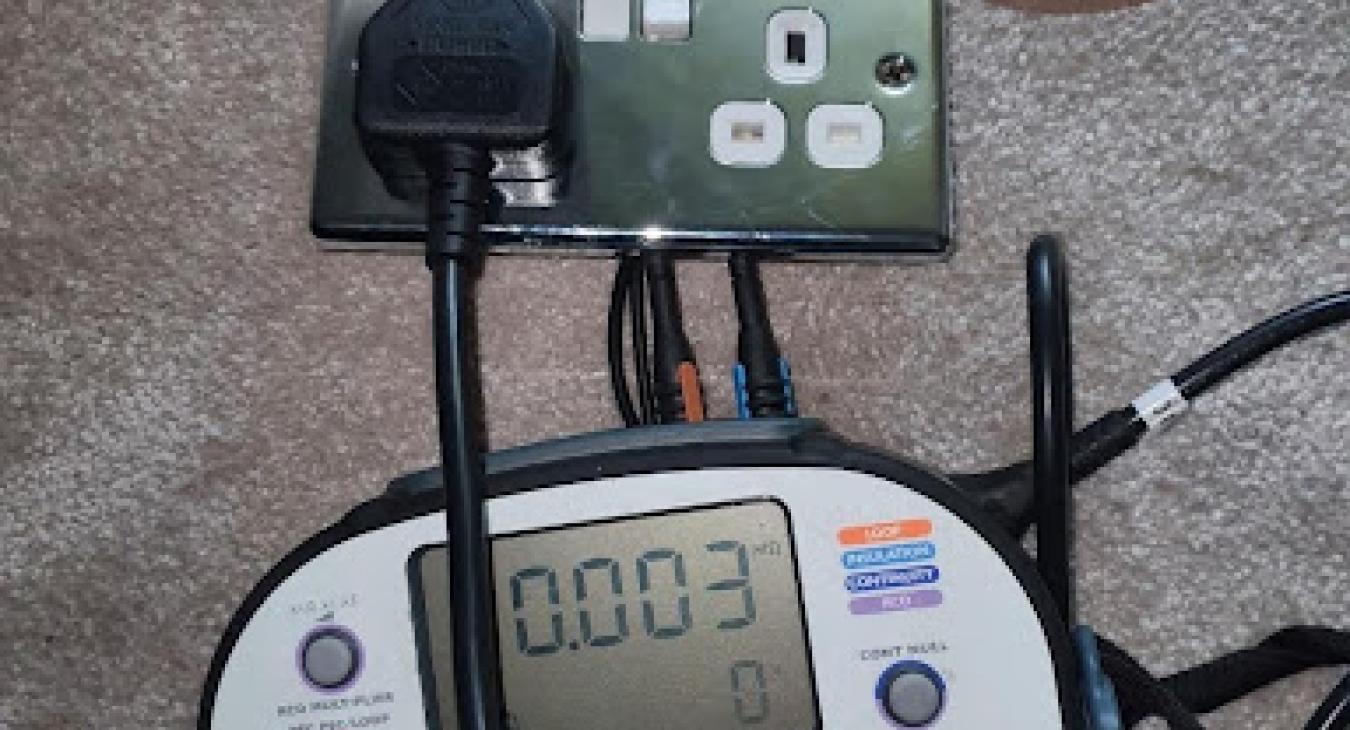
When a socket has ‘fused’ it can be considered that the socket has suffered damage such that it will no longer continue to be a useful part of the electrical system, hindering the operation, introducing danger, and blowing fuses or operating the trip switches of the electrical system.
The socket in the photograph above has failed due to water ingress and there is now a short circuit between Line and Neutral causing the circuit to trip at the consumer unit / trip switch box. Often, the term ‘SOCKET FUSED’ can mean a few different issues have occurred. It is a general term to describe the failure of a plug socket and the actual electrical issue could be any of the following:
- The plug socket has gone “short circuit” meaning an issue between Line and Neutral resulting in a very low resistance causing high electrical current to flow in the circuit and operating the circuit breaker or ‘circuit breaker’ for that particular part of the electrical installation.
- The plug socket has an Earth Fault. This is a situation meaning a path to earth has been created from either Line or Neutral resulting in electrical current leakage from the circuit to earth. Normally an RCD / RCB / RCCB device will operate where there is earth leakage and in some cases a circuit breaker may also operate under the right conditions.
- The plug socket has burnt out on the back terminals. This can occur when loose connections have developed over time and caused excessive resistance and heat to occur resulting in melting, smouldering, charred and burnt connections and eventual failure of the socket and electrical system.
- The cables have burnt out at the rear. When this occurs, it can also damage the plug socket and cause failure of the socket and tripping of switches in the electrical box / consumer unit. This situation often requires some form of cable repair which may involve some invasive works to access spare cable in voids or extend cables using fresh copper.
- The socket has flashed or popped. This is often the result of one of the above situations but when the socket is going through failure, the shorting out can cause high fault currents to flow between conductors causing loud noises as mini explosions blow the wiring to bits quite literally behind the scenes.
The photograph below shows wiring behind a socket that we discovered recently. The cables had shorted out and the ‘SOCKET FUSED’. The fault currents that had been flowing had essentially blown the earth wire to bits. We can see the blackening on the cables and that fact that the earth appears to be missing from the middle.
The problems here have been amplified due to the age of the cabling in the property and the fact that the fuse box / consumer unit is also out of date. The wiring is approximately 60 years old and the consumer unit has no modern electric shock protection meaning less protection for the cables also. The cabling was also installed on the incorrect circuit breaker meaning that too much electrical fault current was allowed to flow. These three factors could easily have caused an electrical fire and the homeowners were lucky that the trip switch operated in time to prevent this.
What can be done to prevent these situations?
Regular (every 10 years) electrical inspections should be carried out by a suitably qualified electrician. Following the report produced, any recommended action should be considered and acted upon especially if the report highlights dangerous situations present. You can:
- Check your electrical accessories regularly to see if any are damaged, discoloured or feel warm to the touch
- Check the consumer unit / fuse box has no holes in, is not damaged and is secure to the wall
- If trip switches trip regularly then have them checked out
- Check appliance cords to ensure that they are in good condition, not trapped or damaged and show no signs of melting
- Check the appliance plugs to ensure that they are in good condition
- Keep a diary of any strange electrical issues like flickering lights, funny smells, or tripping switches
- Have your consumer unit updated occasionally to ensure that you have the latest protection available. Early detection by modern consumer units can prevent electrical shock, prevent damage to the electrical system, appliances and help to prevent electrical fires.
- Make sure you are not overloading sockets or extension leads as this leads to heat and fires. No more than 13 amps of electrical current should ever be used at a socket. Extension leads have a rating printed on them in most cases and this should be checked to ensure that it is not exceeded.
How much do these problems cost to fix?
Typically, from a few hundred upwards depending on the damage that has been caused and any repair works that are necessary. The most recent job with the burnt cables in shown in the photograph cost a few hundred to make safe enough to turn the power back on. Due to the age of the wiring and the damage caused it was not possible to reinstate a socket. In this case, the wiring was repaired and made safe.
How long does it take to fix these types of issues?
Generally speaking, it takes a few hours and some small parts to put this type of problem right. Where testing and investigation works uncover more serious situations then repairs can take longer or rewiring can be recommended, each case is different. Need some advice? Get in touch with Electrical Faults Fixed, Liverpool today.











